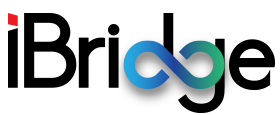The Internet of Things (IoT) is the next big wave in personal computing, where everything we do will be digitally monitored and controlled. It greatly benefits various industries, such as healthcare, manufacturing, agriculture, and smart cities. In this article, we will delve deep into real-time monitoring and control using IOT device integration through several aspects, such as the technologies involved in it, the applications of those, IOT benefits, challenges faced during its deployment, prospects, etc.
What is the IoT and its Ingredients?
IoT Architecture
The basics of IoT are built upon the following four layers.
Sensing Layer: This refers to sensors and devices that gather environmental data. These can be as simple as temperature sensors or large machines monitoring several parameters simultaneously.
Network Layer: This layer transmits the data sensors collected to desired destinations. It uses many communication protocols, such as Wi-Fi, Zigbee, BLE, and cellular networks.
Data Processing: The data passed must now be processed and analyzed. This layer usually involves edge computing and cloud-based resources required to process immense information flows and transform them into valuable details.
Application Layer: These houses the software applications responsible for processing data further to create real-time responses such as monitoring, control, and decision-making.

Key Technologies Enabling IoT
Sensors and Actuators: Collecting Data (Sensor) / Doing an Action based on information (Pick up). An example would be a temperature sensor turning on an actuator that controls a cooling system.
Communication Protocols: MQTT, CoAP, and HTTP help solve the problem of seamless data transmission between IoT devices to the Platform.
Cloud computing stores, processes, and analyzes the vast data IoT devices produce.
Edge Computing: It works alongside cloud computing for local data processing, which minimizes latency and bandwidth consumption.
AI and Machine Learning: Boost IoT potential with predictive analysis and automation.
Real-Time Monitoring and Control using IoT applications
Healthcare
In the healthcare industry, IoT devices would come in handy with real-time monitoring of patient’s vital signs like heart rate. Data from wearable devices, including smartwatches and fitness trackers, are collected all the time and subject to analysis to reveal more about patient’s health. Such real-time monitoring can ensure the early identification of health concerns, the issuance of appropriate interventions, and the provision of treatment plans tailored to the individual in need. Moreover, the devices that are IoT enabled can regulate medical equipment, which helps dispense treatments with great precision and on time.

Manufacturing
Integrating IoT in manufacturing, known as the Industrial Internet of Things (IIoT), helps improve operational efficiency and productivity. Machinery is equipped with sensors that deliver performance data, maintenance alerts, and information about possible failures in real-time. This data allows for better model building, predictive maintenance planning, and lasting equipment. In addition, IoT systems will enable you to control production from a distance, optimizing the operation of production lines and quality assurance.
Agriculture
The concept of intelligent farming uses different IoT devices to monitor and control agricultural functions. Soil sensors deliver real-time information on moisture contents, nutrient properties, and temperature for accurate irrigation and fertilization. Cameras and drone sensors monitor crop health and growth patterns, promptly enabling intervention. Automated machinery driven by IoT systems is also used for harvesting crops and tending to the needs of plants.
Smart Cities
Real-time monitoring and remote infrastructure control are unlocking new frontiers in the Internet-of-Things (IoT) domain, facilitating intelligent city development and improving urban living. The balance of energy supply and demand is possible using smart grids, real-time control over water consumption, or electricity meters. Intelligent traffic management solutions powered by IoT technology monitor traffic flow and regulate signals, leading to decongested roads and enhanced safety manners. In addition, environmental sensors monitor air quality and pollution levels to ensure appropriate public health steps are taken.

Benefits of IoT Integration
Enhanced Efficiency
Streamlining operational procedures, eliminating waste, and enhancing resource utilization will significantly impact real-time monitoring and control. For example, machines in manufacturing would require predictive maintenance to keep them operating at their highest efficiency, which saves energy and averts downtime.
Improved Decision-Making
Real-time data makes the path toward an educated choice much more precise and reveals hidden insights. In agriculture, real-time soil condition data enables farmers to use less water and fertilize more efficiently.
Cost Savings
Internet of Things integration reduced operating costs through process automation, resource allocation optimization, and preventing equipment failures. Telemonitoring decreased hospital visits and readmissions, ultimately saving on healthcare costs.
Enhanced Safety and Security
Real-time monitoring provides timely detection and remediation to enhance security. The IoT systems create connected infrastructure in smart cities that enable real-time monitoring and control of the environment, which helps improve public safety. Application: IoT devices also allow workers to process safety processes by sensing hazardous conditions in the industrial setting.
Whether it be in the form of Personalization or Customization
Collects and Analyzes Individual Data IoT helps enable personalized experiences by capturing individual data. This philosophical shift in healthcare translates to biologically respectful treatment plans or highly individualized care, and practical applications are far broader (for example, lighting color-medially that adjusts over a day within IoT devices for smart homes).

Challenges in IoT Integration
Security and Privacy Concerns
More IoT stuff also means more attack surface. Both data security and user privacy mandate strong encryption and authentication-safeguard up to the last mile access. On top of this, the collection and storage of vast amounts of personal data create serious privacy issues requiring compliance with stringent data protection regulations.
Interoperability
Provisioning: IoT devices and protocols are so diverse that working together can be challenging. Interoperability: Standardized Protocols and open Platforms—different devices and systems speaking the same language.
Scalability
With the increased number of connected devices, scalability is one area where huge investments and innovations are made. As the number of devices and data grows, IoT systems have to cope with more without decreasing performance, which calls for scalable infrastructure and optimized solutions.
Data Management and Analytics
The data these IoT devices generate is a double-edged sword—it’s valuable but also requires either an already existing or newly created series of techniques for managing and analyzing that volume. Two methodologies, Bandwidth Economics in Query Processing and Real-Time Data Warehousing, were used to extract valuable insights. This makes edge computing essential as it processes data near its source and relieves central systems.
Power Consumption
The fact that many IoT devices are battery-powered also breaks the deal, which means power-saving measures must be considered. As such, energy-efficient design and low-power communication protocols are necessary for the viability of IoT systems in real-world applications.

Forward-looking Prospects for the Integration of IoT
The future of IoT integration with real-time monitoring and control seems bright because of technological advancement and acceptance across different sectors. I believe the following trends will influence IoT in the coming days.
5G Connectivity
The 5G networks will broadly amplify IoT functions by representing fast, dependable, and low-latency connectivity. The implications for IoT-connected devices go beyond simply being able to transmit and process data in real-time, creating new possibilities for applications such as remote surgery, autonomous vehicles, or smart cities.
AI and ML
AI and machine learning will fuel IoT capabilities. These technologies will enable more advanced data analysis, predictive analytics, and automation. AI can, for example, predict equipment failures more precisely and thus optimize maintenance schedules while minimizing downtime.
Edge Computing
IoT ultimately pairs up with edge computing, which is expected to expand as it works with the cloud by handling data locally. This, in turn, will help reduce latency, improve response times, and remove load from centralized systems. Real-time decision-making applications, such as autonomous vehicles and industrial automation, depend highly on edge computing.
Blockchain Technology
Blockchain technology can improve the security and transparency of IoT systems. The blockchain application provides decentralized and tamper-proof transaction records, allowing data integrity and authenticity to be verified, which can solve some security and privacy overheads.

Increased Standardization
Standardization drives simplification and overcomes interoperability issues, making an IoT ecosystem of many devices and things frictionless. Industry collaborations and open standards are needed to ensure compatibility with minimal customization. Most importantly, standardization simplifies the deployment process, which will, in return, increase the adoption of IoT.
Sustainable IoT Solutions
The energy-efficient devices and systems that link to our IoT world will be new, pushing software development and hardware design into more sustainable territory. Current innovations, such as low-power communication protocols, energy harvesting techniques, and battery management, allow these services to sustain themselves.
Human-Machine Collaboration
The Internet of Things allows for much tighter human-machine connections, increasing productivity and effectiveness. For example, IoT systems can provide workers in an industrial setting with the real-time data and insights they need to make better choices or operate more safely.
Healthcare Advancements
IoT in Healthcare In healthcare, the application of IoT goes far beyond essential monitoring efforts for patients. Artificial IoT systems can include various data types, such as electronic health records (e.g., EHR) and medical imaging or genetic information. This offers a more complete diagnosis and solutions for future health. Moreover, IoT devices form the backbone of RPM (remote patient monitoring), particularly in chronic disease management. On the patient side, IoT-enabled insulin pumps and glucose monitors automatically collect information that is transmitted almost in real time to patients and employers/providers for continuous diabetes management.

Smart Manufacturing and Industrial Automation
Manufacturing IoT also allows the creation of highly flexible and autonomous production environments. The idea of factories with IoT devices, robotics, and AI systems all working together is now much more than just a concept. Such intelligent factories employ IoT for just-in-time production to save inventory costs and augment product quality. By incorporating IoT in supply chain management, you can track your goods and services promptly, resulting in greater transparency of things happening around you and, simultaneously, lessening potential losses due to theft or spoiling reasons.
Precision Agriculture
IoT is propelling the march in agriculture towards Precision Farming: access live weather, soil health, and crop growth information via IoT devices. Farmers can use this information for planting, irrigating, and harvesting. Automated irrigation systems that modify the water delivery on the go based on real-time soil moisture data, as an example of advanced IoT applications and drones equipped with multispectral imaging to evaluate crop health, also allow pest colonization early detection.
Smart Cities: It is a solution for optimal urban management
The IoT is beginning to infiltrate more sophisticated urban management systems for smart city implementation. Intelligent waste management systems, for instance, deploy IoT sensors to monitor bin levels and plan the most efficient collection routes, saving cost and carbon footprint. In addition, IoT-enabled emergency response systems help facilitate public safety by arming first responders with live data to better respond quickly and effectively to incidents.
New Age Technologies with More IoT Capabilities
Artificial Intelligence Incorporation
The innovation security IoT, in combination with AI, can be implemented at the FWUP to revolutionize real-time monitoring and control. An AI algorithm sifts through all the data these IoT devices generate to discern patterns, make predictions, and automate reactions. For example, AI processes real-time sensor data in autonomous vehicles to steer them safely and efficiently. Technology like AI in healthcare can analyze the data from wearable devices to identify health issues before they become fatal.

New Edge and Fog Computing Features
Whereas edge computing refers to processing data at or near the source on IoT devices and nearby servers, fog computing adds another dimension by laying down a fabric of distributed intelligent resources spanning from cloud to edge. The multi-tiered approach is a great use case for complicated applications such as smart grids or other types of apps, where real-time data processing and fast response are essential. It allows data to be processed and analyzed near where it is produced, making IoT systems more efficient and reliable.
Enhanced Security with a Blockchain
Blockchain is a decentralized approach to securing IoT data and maintaining its integrity and authenticity. Blockchain is primarily useful for finance and supply chain management, where data tampering can result in massive damage. Moreover, blockchain automatically allows IoT devices to conduct secure and anonymous transactions between machines.
Pros & cons of IoT adoption from the socio-economic aspect
Increase in Employment and Economic Growth
We are witnessing an increasing use of IoT that will drive substantial economic expansion. The IoT is a vast market estimated to be worth trillions of dollars within the coming years, and many millions will be employed across various industries. It will lead to new industries and services, such as IoT consulting device manufacturing or even data analytics, thus creating numerous opportunities for businesses and professionals.

Improving Quality of Life
That is the great promise of IoT – to substantially improve our quality of life. IoT devices improve patient outcomes by allowing for better disease management and personalized treatments. IoT makes living in intelligent cities more convenient by optimizing the use of infrastructure, reducing pollution levels, and improving public security. In addition, the IoT application in smart homes provides a level of comfort and energy economy for everyday home activities, making it much more comfortable and sustainable.
Solving Our Environmental Woes
IoT can also be used to solve significant environmental issues. Precision farming means using less water in agriculture and causing a more minor application of fertilizers and pesticides to an ecological footprint. IoT-based traffic management in smart cities to lower congestion and emissions. IoT-enabled monitoring of environmental parameters tracks pollution and natural disasters in real-time so that intervention can occur sooner to prevent the worst.
Sociocultural Challenge
The adoption of IoT comes with socio-economic challenges despite the ever-growing opportunities. A lack of equal access to IoT technologies could increase the digital divide. Smart cities must create infrastructure and programs for digital literacy so that underserved communities can also benefit from advancements in IoT. Furthermore, the shifting of jobs because of automation requires that people working be reskilled and upskilled to perform new roles generated by IoT.
The Road Ahead
With improved technology and real-time control, the uptake of IoT devices for monitoring has a bright future that spans different sectors. However, unlocking the vast potential of IoT faces several issues, and it is essential to use them effectively for gains from new technologies that are not only to be delivered to those at higher levels. The future is hard to predict, but IoT will surely be vital in building a more “connected,” efficient, and intelligent world.
By embracing the Internet of Things and fostering equity in innovation, collaboration, and inclusion, we can harness its potential to improve lives, power economic growth, and create a sustainable tomorrow. The evolution of rapid IoT integration has just begun, and its potential is limited only by the boundless range of frontier-thinking wranglers who push this technological revolution forward.

We are a trusted digital transformation company dedicated to helping our clients unlock the power of their data and ensuring technology does not impede their success. Our expertise lies in providing simple, cost-effective solutions to solve complex problems to improve operational control and drive profitability. With over two decades of experience, we have a proven track record of helping our customers outclass their competition and react swiftly to the changes in their market.
We welcome the opportunity to discuss how we can help your firm achieve its goals and improve its bottom line.
Contact Us
Reach out today to schedule a discussion with an iBridge team member to learn how we can help your business in terms of growth and digital transformation.





